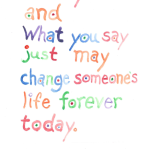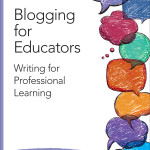When I was a boy, I was a reluctant reader. There were three types of reading that I enjoyed: magazines, newspapers, and Choose Your Own Adventure books. These books were fantastic because they would present an interactive option at key junctures during the story. As the reader, I had to decide which way the plot would turn, and turn to the accompanying page based on my choice. The books engaged me because of the adventurous nature of being thrown into the story, and from a practical view, encouraged multiple rereads of the story, having the opportunity to find a different ending or multiple plot twists.
The series was initially developed by a father whose bedtime stories became boring, and in order to spice up the stories, he put the choice for the ending into his daughters’ hands. Most teachers understand the importance of providing choice for students. Choice can be a very engaging component of a classroom, allowing students to have a say in how the classroom is managed, how they complete assignments, or even how they demonstrate their learning.
Below are several ideas and strategies for including choice in your daily classroom activities.
Choice in Homework: Allow students to have a say in how and when they complete homework. With the never-ending schedules of students outside the classroom, providing choice can help students to better manage their workload. In the classroom, I provided all of our weekly assignments on Monday, and allowed students to hand in everything by Friday. This gave students the opportunity to choose which nights were best to complete assignments. Some chose to complete everything the first night, while some completed a portion each night. You can also provide differentiated assignments for students. Allow students to demonstrate their learning using different learning modalities. Some students may want to complete a written reflection, while others may want to use a visual method to show their learning. Allowing choices to complete homework puts students in control of their learning.
Choice Boards: Can be used to provide a variety of learning activities based on student interest and need. A choice board can be set up on a 3×3 grid (or 2×2 or 4×4 grid), giving students a choice between 9 activities relating to the learning concept or unit of study. The activities are usually differentiated by learning style, providing choices for tactile, auditory, or visual learners. An excellent resource for Choice boards, including some great templates is Dare to Differentiate.
Choice in Classroom Organization: Giving students simple choice in how the classroom is run can have a huge impact on students. On the first day of school, try letting students choose their own seats. Let students choose any spot in the room when it comes to independent reading time. Some students will cozy up under a table, some will use a bean bag chair, and some will choose to sit next to a friend to read. My favorite spot to read with kids was just outside our classroom door-it gave them a lot more space!
Choice during Center Time: One of the most effectively managed classrooms I have ever seen was a first grade class. I was observing a teacher during her center time, and she was having her students take part in the Daily 5 activities for reading and writing. The teacher had worked hard all year to give students choice during this time. While students had to eventually choose all of the activities during the week, they had the choice as to where and when they completed the activities. I was overly impressed when I watched a 6-year old girl grab her self-monitoring checklist and utter, “I already did read-to-self and read-to-partner, but I didn’t get to do my word work this week.” Giving choice during center time can be a very powerful motivator for students.
Genius Hour: Provides the ultimate in student choice, engaging students based on their personal passions! With Genius Hour, teachers ask students to find a personal passion and give them a set amount of time each week to engage in a project based on that passion. This video from www.geniushour.com explains the concept. Students might create a project through Minecraft with other students. The important part is that students engage in learning based on their own passions, and share their learning when the project is over. Don Wettrick, has written an excellent book that explains the premise, Pure Genius-Building a Culture of Innovation and Taking 20% Time to the Next Level. Paul Solarz refers to Genius Hour as Passion Time in his classroom, and has gathered many resources on his website.
When a father realized that his bedtime stories were getting boring, he gave his daughters a choice to inject some energy into the stories. Providing this type of choice for students can also inject energy into your classroom. Tell us how you provide students with choice in your classroom. Share in the comments section below.
By @RACzyz
References:
https://daretodifferentiate.wikispaces.com/Choice+Boards
http://psolarz.weebly.com/2013-2014-passion-projects.html
http://www.cyoa.com/ Choose Your Own Adventure books are available here!





Pingback: Reflections from Tomorrow’s Classrooms Today Conference | 4 O'Clock Faculty
Pingback: My Relationship with Books | 4 O'Clock Faculty